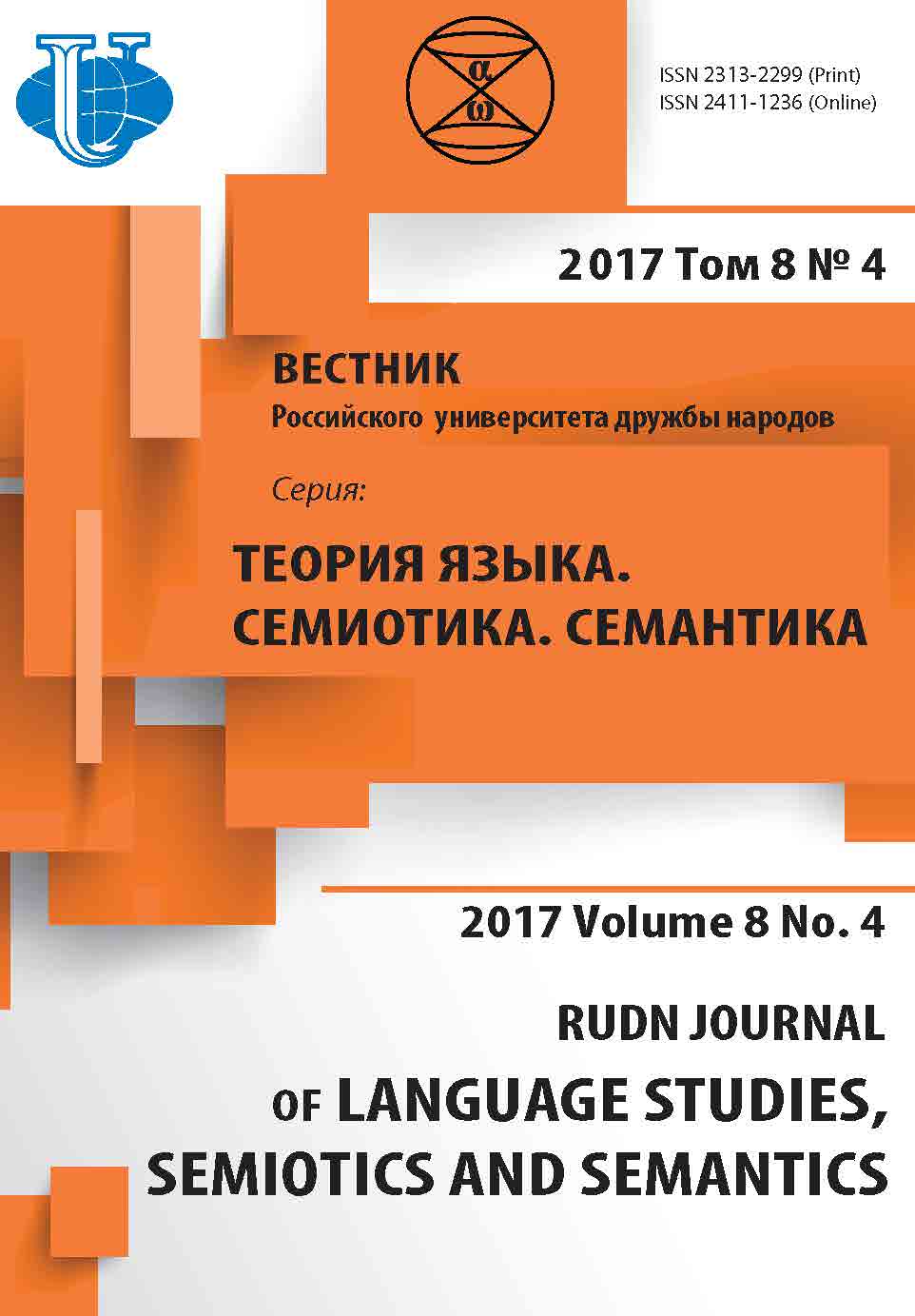TO RUN OR TO FLY LIKE AN ARROW FROM THE BOW: VOCABULARY OF MOVEMENT IN THE N.V. GOGOL'S STORY “NEVSKY PROSPECT” AND ITS ITALIAN VERSION
- Authors: Shkolnikova O.J.1, Dementieva AV1
-
Affiliations:
- Moscow State University
- Issue: Vol 8, No 4 (2017)
- Pages: 811-825
- Section: Articles
- URL: https://journals.rudn.ru/semiotics-semantics/article/view/17959
- DOI: https://doi.org/10.22363/2313-2299-2017-8-4-811-825
Cite item
Full Text
Abstract
The paper examines the lexical means of rendering the concept “movement” in the Russian and Italian languages. On the basis of component analysis we found a number of differential semantic components as a mode of movement, its intensity, purpose, direction and others. The analysis demonstrates a series of differences between Russian and Italian lexical units on the level of semantic structure. It shows how Italian translator tries to find Italian words with meaning equivalent to Russian original.
About the authors
Olga Ju Shkolnikova
Moscow State University
Author for correspondence.
Email: chkolnikova@mail.ru
Shkolnikova Olga Yurievna, Doctor of Philology, Professor of the Department of Romance Linguistics, Faculty of Philology, Lomonosov Moscow State University; Interests: comparative studies of Romance Languages and culture in the synchronic and diachronic aspects, story of the Latin writing, the problems of the publishing of manuscripts, theory and practice of translation
Leninskie Gory, GSP-2, Moscow, 119992A V Dementieva
Moscow State University
Email: chkolnikova@mail.ru
Leninskie Gory, GSP-2, Moscow, 119992
References
- Гоголь Н.В. Невский проспект // Сочинения. М.-Л., 1928. Том 2. С. 5-38.
- Gogol, N.V. Il Corso Neva // Tutti i racconti. A cura di Leone Pacini Savoj. Roma, 2012. pp. 381-404
- Gak, V.G. (1977). Comparative Lexicology of French and Russian Languages. Leningrad: Просвещение. (In Russ.).
- Zalizniak, Anna A., Levontina, I.B., & Shmelev, A.D. (2005). The main ideas of Russian Language world outlook. Мoscow: Languages of the Russian Culture. (In Russ.).
- Ozhegov, S.I. (1973). Dictionary of Russian language. Мoscow: Sovetskaya entsiklopediya. (In Russ.).
- Efremova, T.F. (2000). The New Dictionary of Russian language. Moscow: Publishing House “Russian Language”. (In Russ.).
- Nikitina, I.G. (2010). The ways of Representation of the Concept “movement” in the different structure languages: Russian, English and Chuvash [dissertation]. URL: http://www.dissercat.com/ content/sposoby-reprezentatsii-kontsepta-dvizhenie-v-raznostrukturnykh-yazykakh#ixzz4kTqKseru (accessed: 10.06.2017). (In Russ.).













